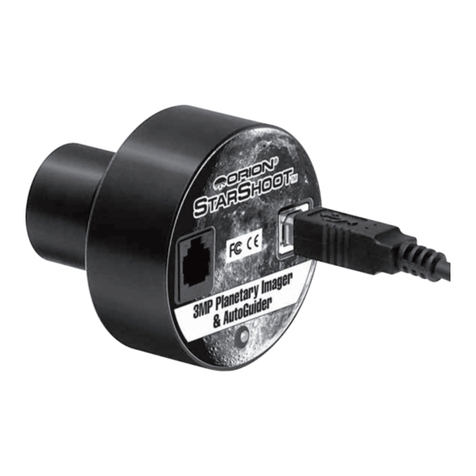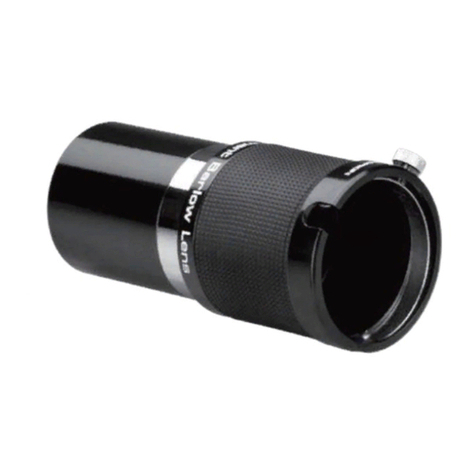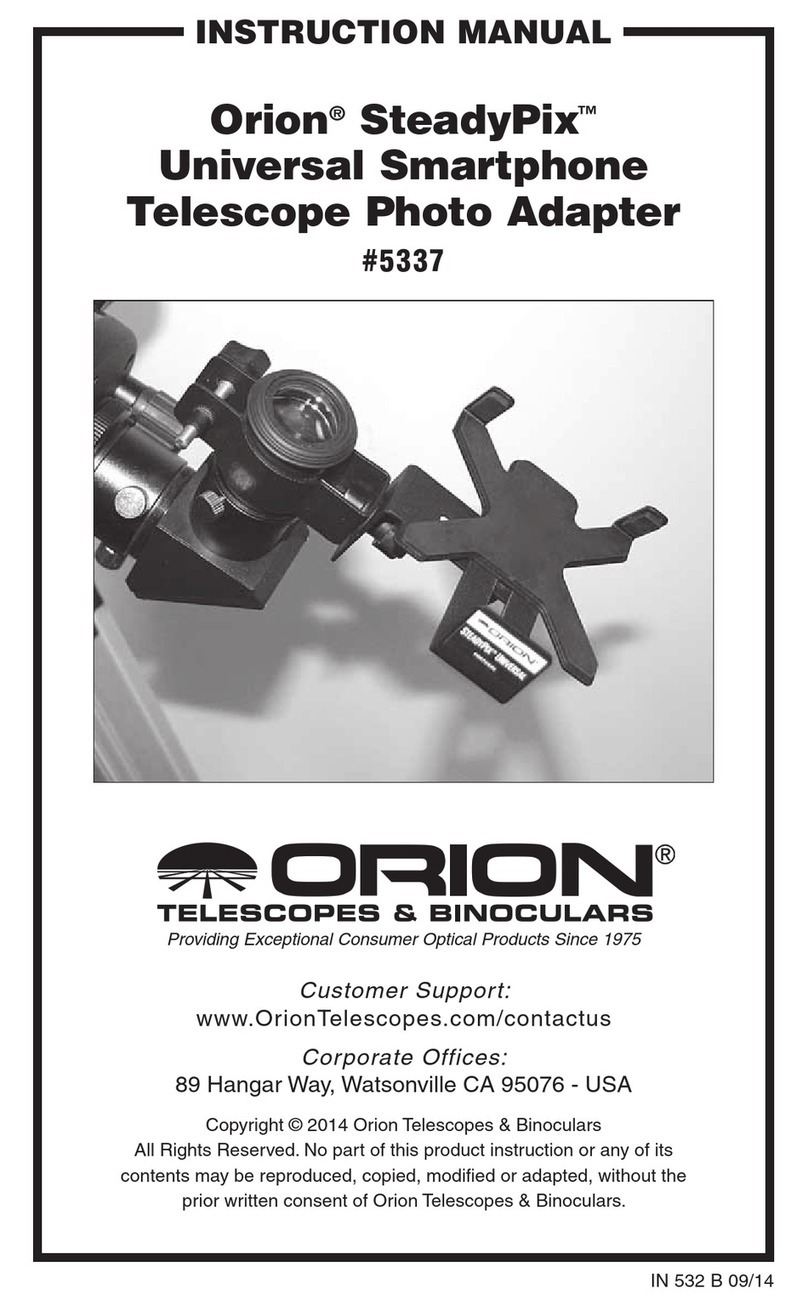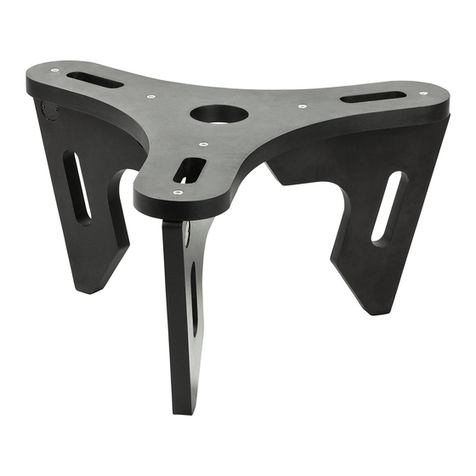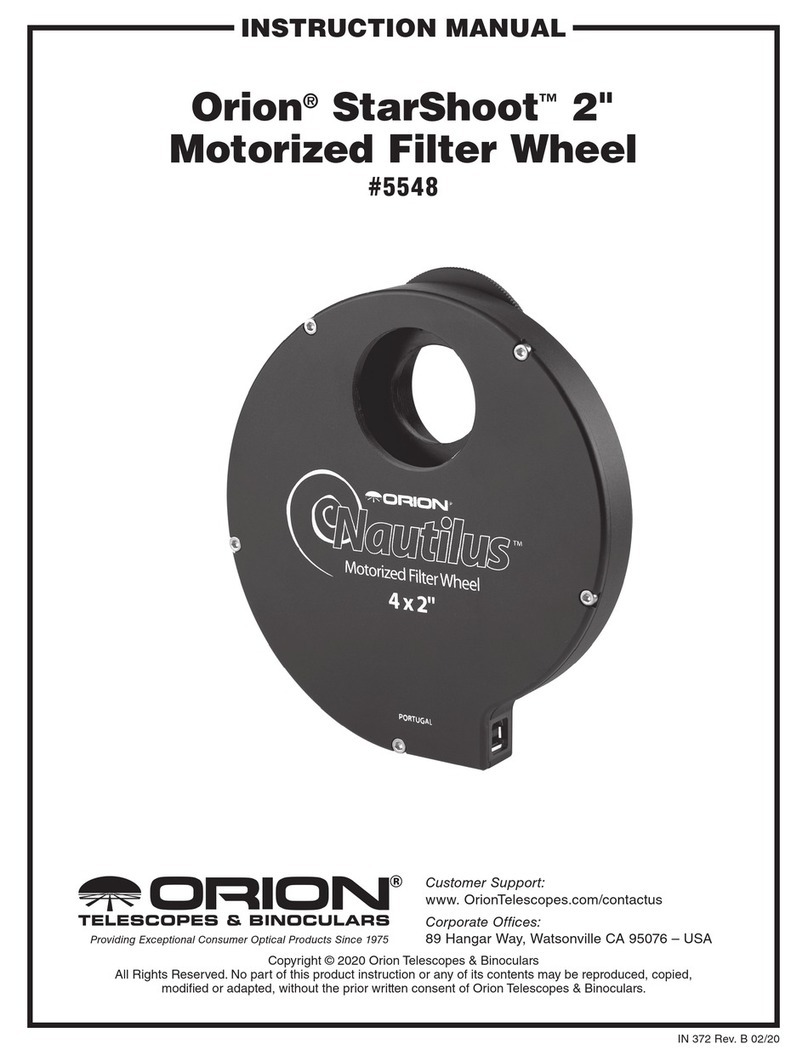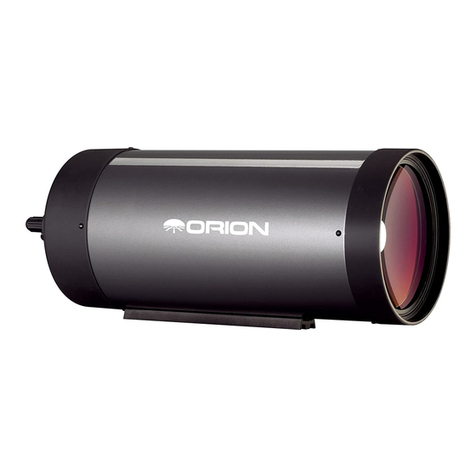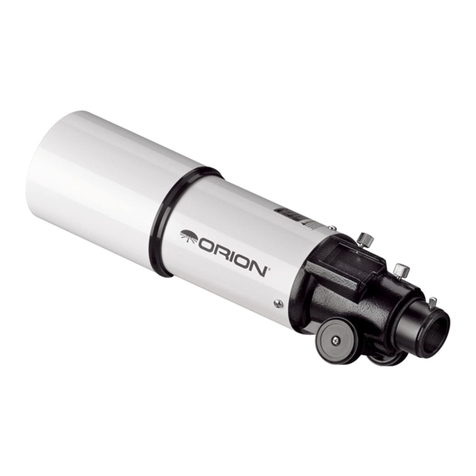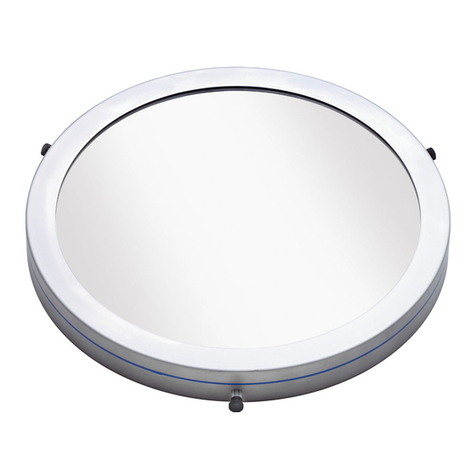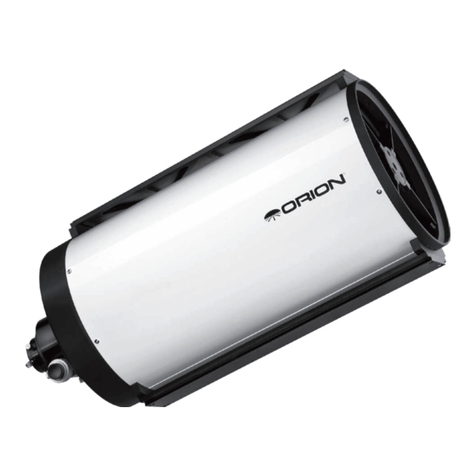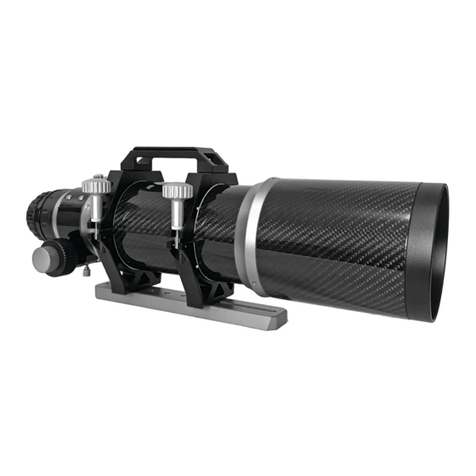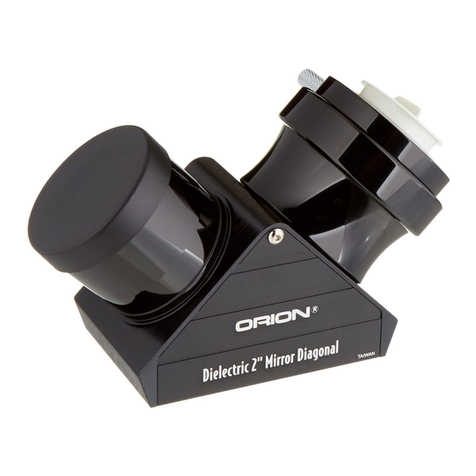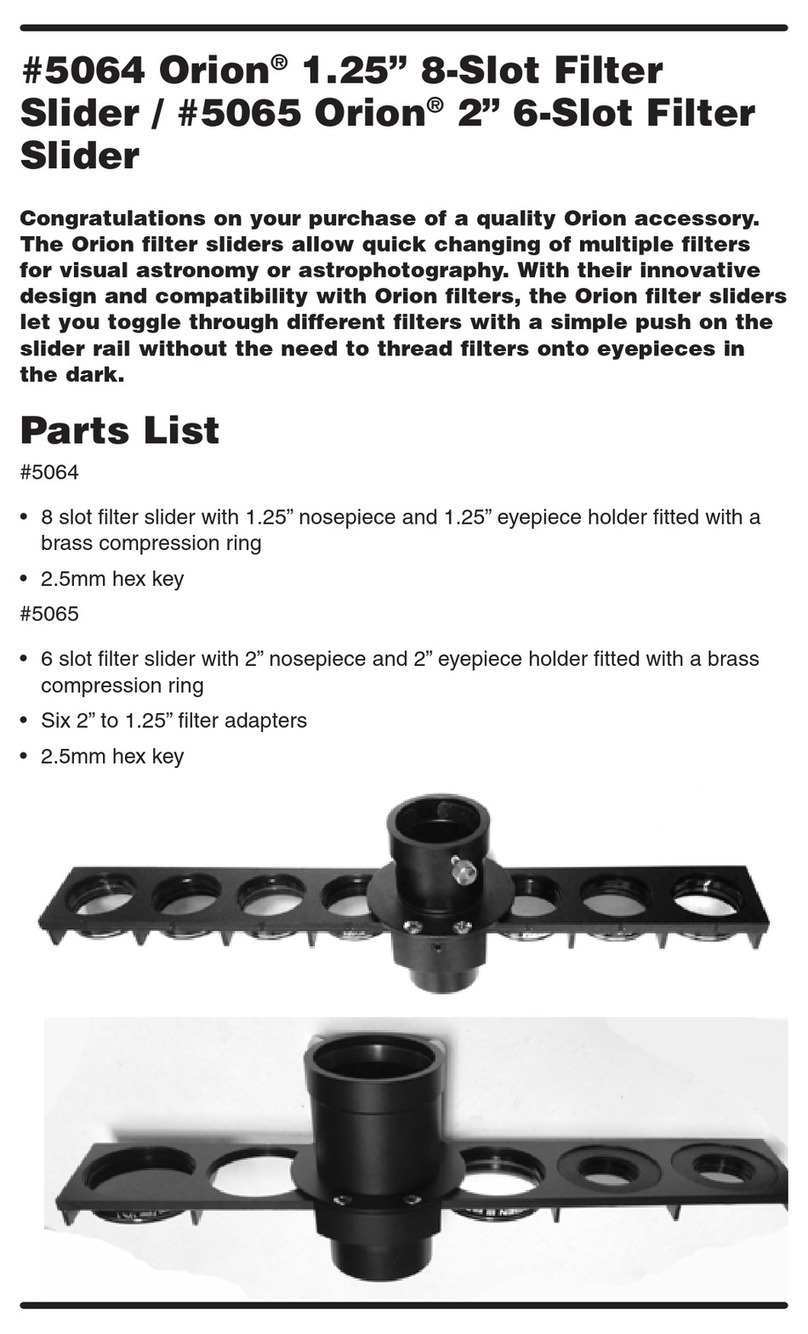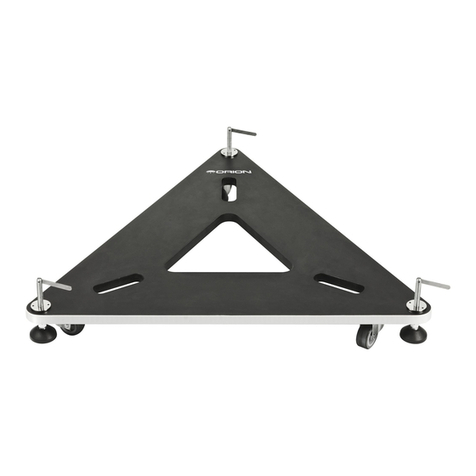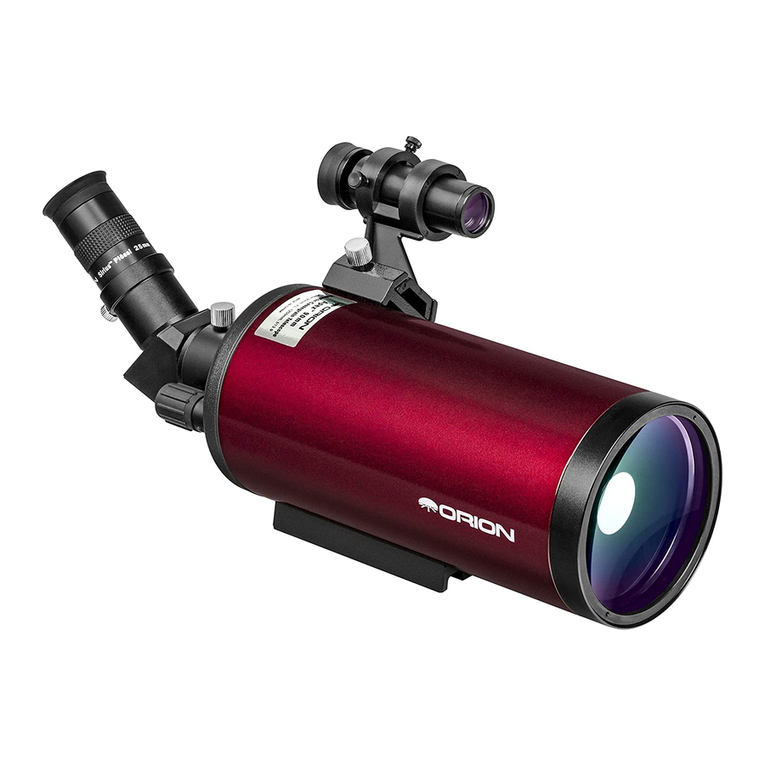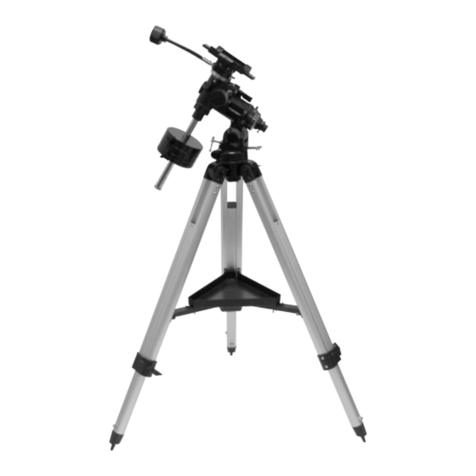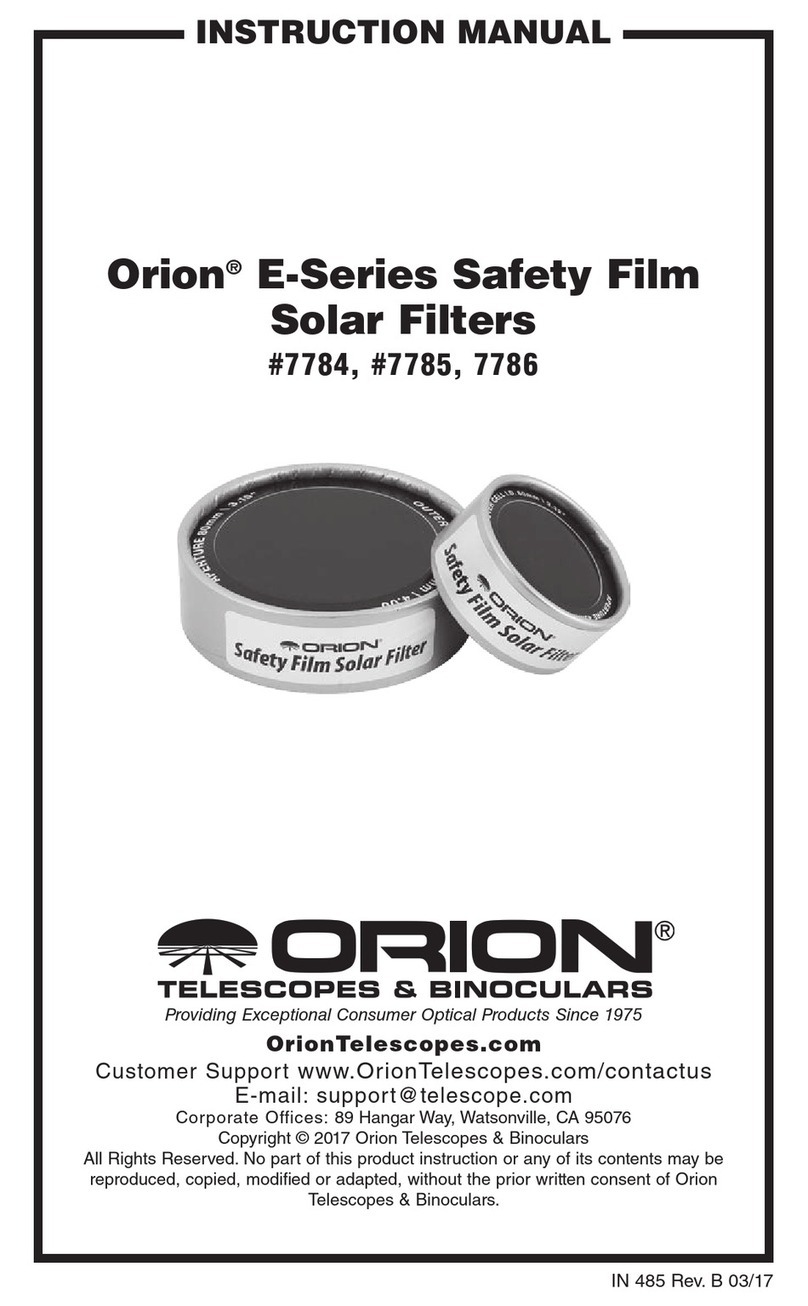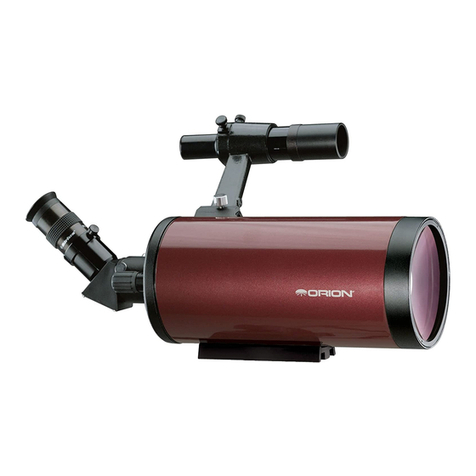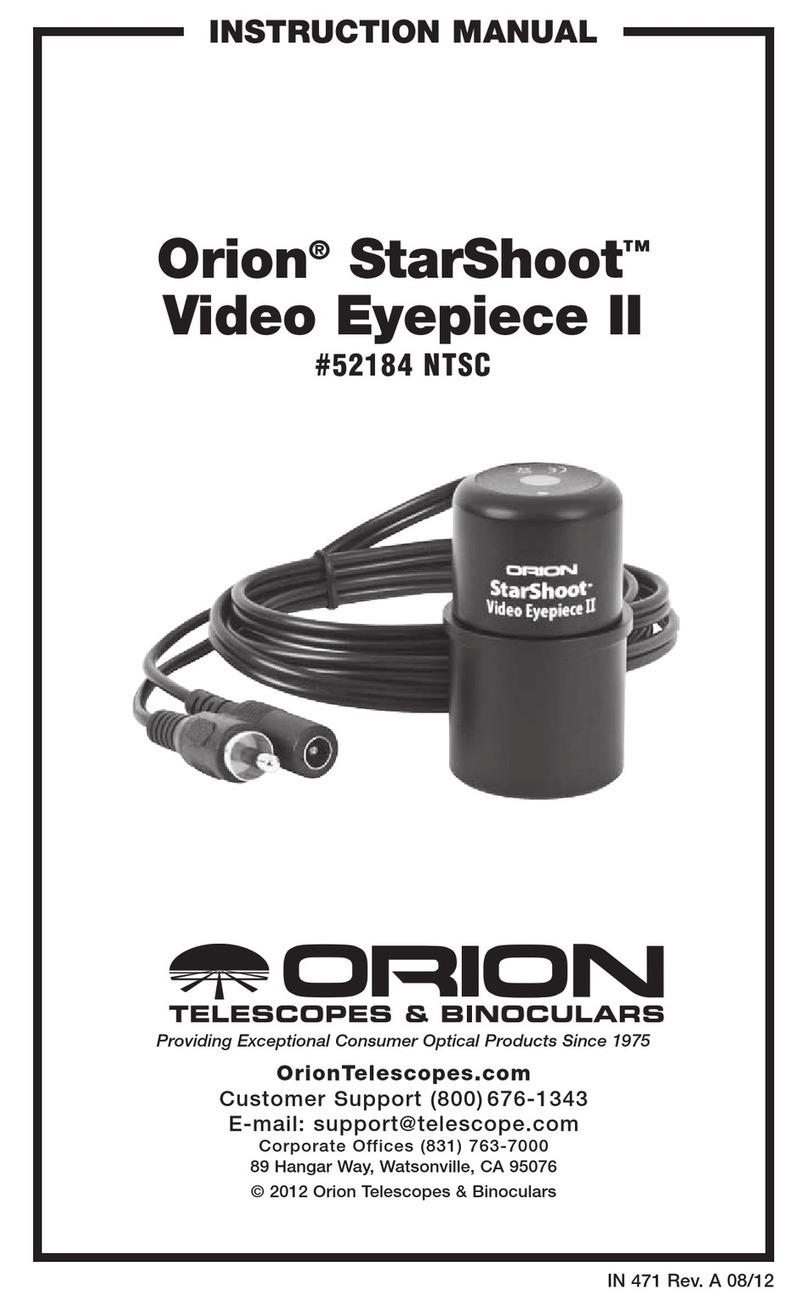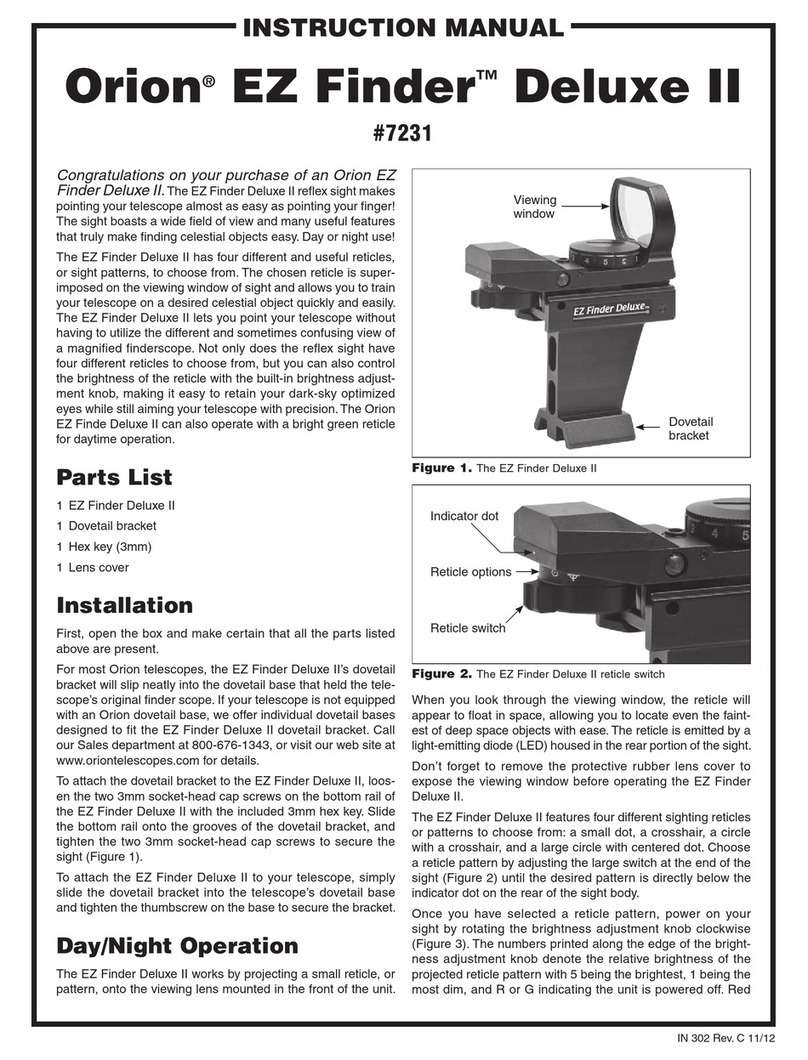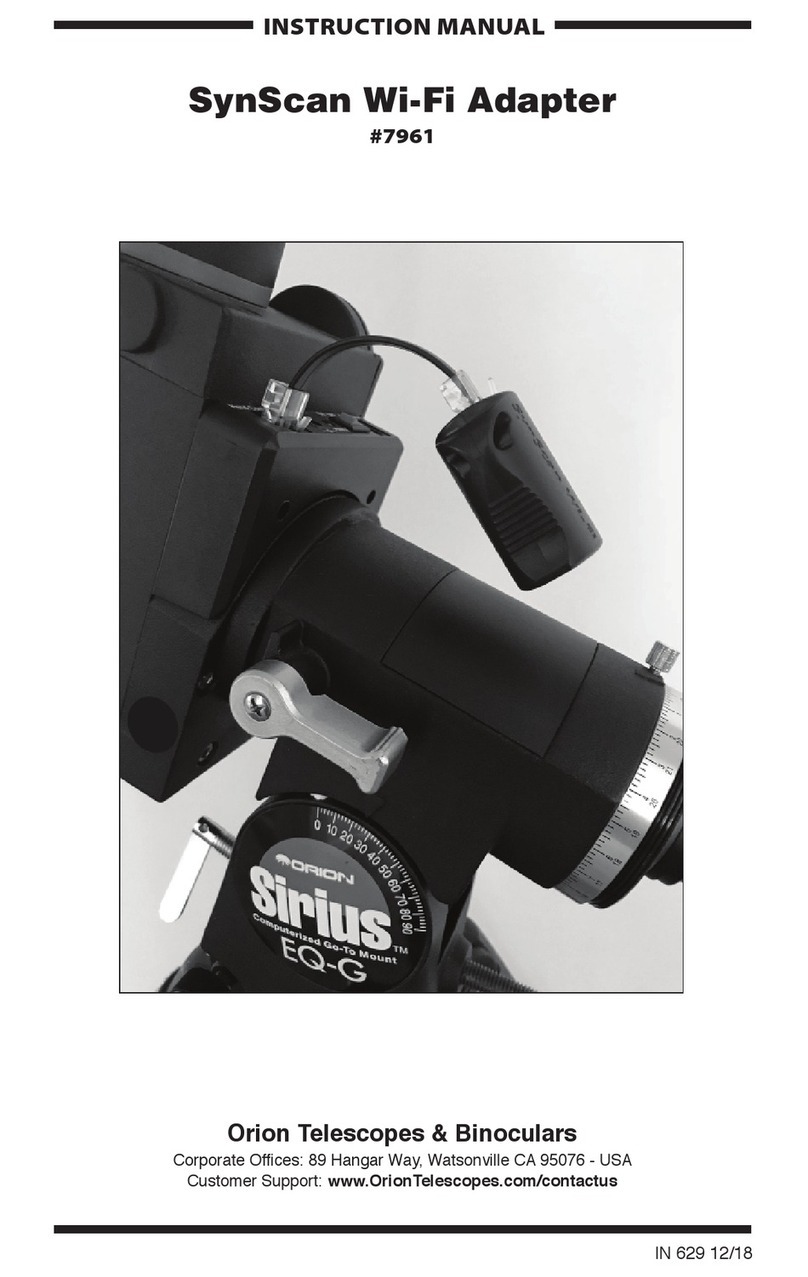
DANGER! Viewing the Sun through any optical
instrument without a correctly inspected and
installed solar lter can cause immediate, perma-
nent eye damage and blindness!
Solar viewing is safe only if you understand the
potential dangers and follow all directions. Read
these instructions carefully and save them for
future reference. Do not allow children or inexpe-
rienced adults to use the telescope or solar filter
unattended.
DANGER! DANGER! Always use a solar filter AND
a light shroud when observing the Sun with a
Truss Tube telescope! A solar filter will protect
your eye and the telescope when you are pointed
directly at the sun; but if the telescope is pointing
slightly off axis (off-target), direct/unfiltered solar
energy could be focused on interior portions of
the telescope.
DANGER! DANGER! DANGER! Always cover your
telescope if you leave it outside during the day-
time! An open telescope, of any design, can burn
the telescope or surrounding areas if an unfor-
tunate alignment of the telescope and the sun
occurs; any telescope will concentrate sunlight to
very high temperatures.
Mounting the Solar Filter
The inside of the lter cell will either be lined with foam tape
or unlined, depending on the telescope or binocular it has
been designed to t. The lter should t just tight enough
to keep from slipping off when the telescope or binocular is
pointed down. If your lter is too loose, it can be custom tted
by applying the supplied foam tape inserts on the inside rim
of the cell. On some models, you may need only one insert to
achieve a snug t. On others, more than one may be required.
The lter should not t too tightly or the optical surfaces may
be distorted due to stress on the cell.
Orion solar filters also feature three equidistant nylon set
screws that, when tightened, ensure a secure fit to the tele-
scope or binocular being used to observe solar activity.
NOTE: Do not solely rely on the nylon thumbscrews to
keep your solar filter safely installed. If your filter is too
loose, please use the supplied foam tape inserts to create
a friction fit. The nylon thumbscrews have been provided
as a “lock-down” safety feature which should be used in
addition to the foam lining.
Using the Solar Filter
1. Check the filter's optical surfaces for any possible
damage before each use. The view through your
telescope should be comfortable and not appear
excessively bright. Stop looking immediately if the view
is excessively bright.
2. Check for any pinholes. Even one bright pinhole
could degrade the image quality. See “Inspection &
Maintenance.”
3. Keep the front of any finder scope covered if it is
not equipped with a solar filter. Better yet, remove
the finder altogether when observing the Sun. An
uncovered finder scope is dangerous to look through.
Even if you do not look through it, unfiltered sunlight
may melt internal parts of a finder scope.
4. ALWAYS use a light shroud and a solar filter if you are
using a truss tube telescope.
5. Aim the telescope at the Sun by moving your tube
assembly until the smallest shadow is cast on the
ground.
6. Allow the telescope and filter to equalize to outside
temperature for at least 15 minutes.
7. Direct sunlight may warm the tube assembly enough
to cause internal heat currents that can degrade image
quality, especially on dark-colored telescopes. Cover
the tube assembly with a light-colored cloth to help
avoid this.
8. If possible, do not view over pavement or buildings.
Viewing over grass will help avoid surface heat currents.
9. Point the telescope away from the Sun before removing
the solar filter! Removing the filter while the telescope
is aimed at the Sun is dangerous if anyone is looking
into the eyepiece, and can damage the telescope if left
pointed at the Sun for too long.
10. “Ghosting” may occur with some compound telescopes,
such as Schmidt-Cassegrains, which incorporate larger
secondary mirrors in their design. If this is a problem,
simply tilt the lter slightly to move the “ghost” outside
the eld of view.
Cleaning the Solar Filter
As with all optics, clean the lter only when absolutely nec-
essary. Clean only with isopropyl (rubbing) alcohol and soft
tissue (lens tissue or plain white tissue). Apply a generous
amount of alcohol to the tissue and rub lightly across the
front surface using long strokes. Allow alcohol to bead and
puddle on the surface (10-30 seconds). Lightly wipe dry with
fresh tissue. If lter is excessively soiled, or streaking occurs,
repeat the procedure. Do not clean the back surface of the
lter! Since the coating is on the back side of the glass facing
the telescope it will rarely, if ever, need cleaning if handled
carefully and kept sealed when not in use. The front surface
can be cleaned often without danger of harming the coating.
Loose dust on the inside surface can be blown off or lightly
dusted with dry cotton.
IN 025 Rev. E 06/13

